This is how it all started. I came across this windmill on the net and added it to my list. It feels like it was ages ago, before the full-scale war. But the circumstances have always been such as to prevent it. Out of the way, too far, no time left. As a result, I visited many great locations around:
Beautiful forest lake on the edge of Dnipro river
Moshny, a real city-museum: #1 and #2
Picturesque and fancy looking ravines
At last, a month ago or so, it was the turn of the wind mill. It was the last station of my one-day outing. The day was nice and sunny but the forecast promised rain at night. Heavy clouds crossed the sky and daylight ended earlier but I caught the last sun rays.
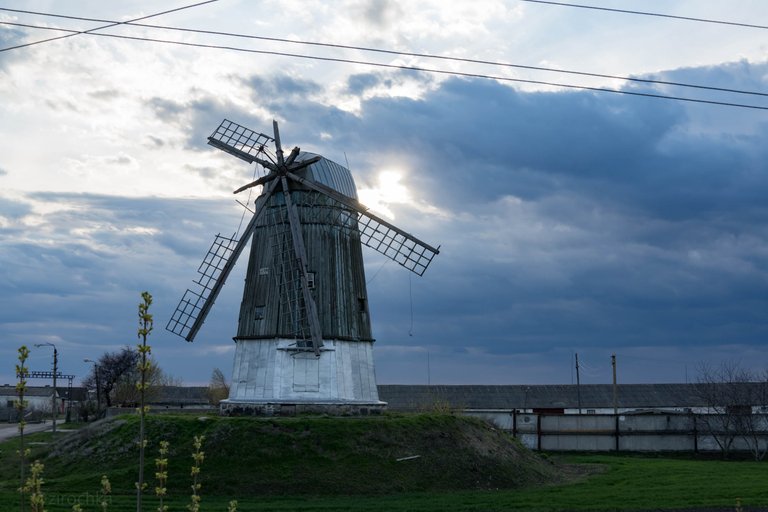
The wind mill is a local monument of cultural heritage and has an interesting story.
Once upon a time, there lived a talented craftsman in the village of Pustomyty who wanted to own a mill. His name was Kuzma Dryga. At first, he built an ordinary mill, typical for Ukraine. Later he ended up in Europe, where he worked as a miller on farms in Holland. During that time, he planned to build such a mill in his native village.
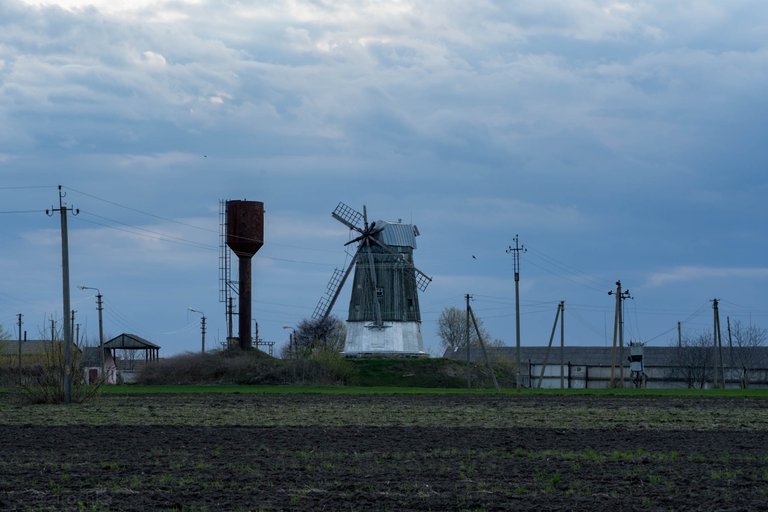
So, in 1902, Kuzma returned home and began to build a mill according to the Dutch project. He buried a 15-meter pole and made measurements and calculations right on the ground around it. The hill on which the mill stands was filled and rammed by the whole village. Millstones for the mill were delivered from France. With the help of other crafty fellow villagers, the construction of the mill was completed.
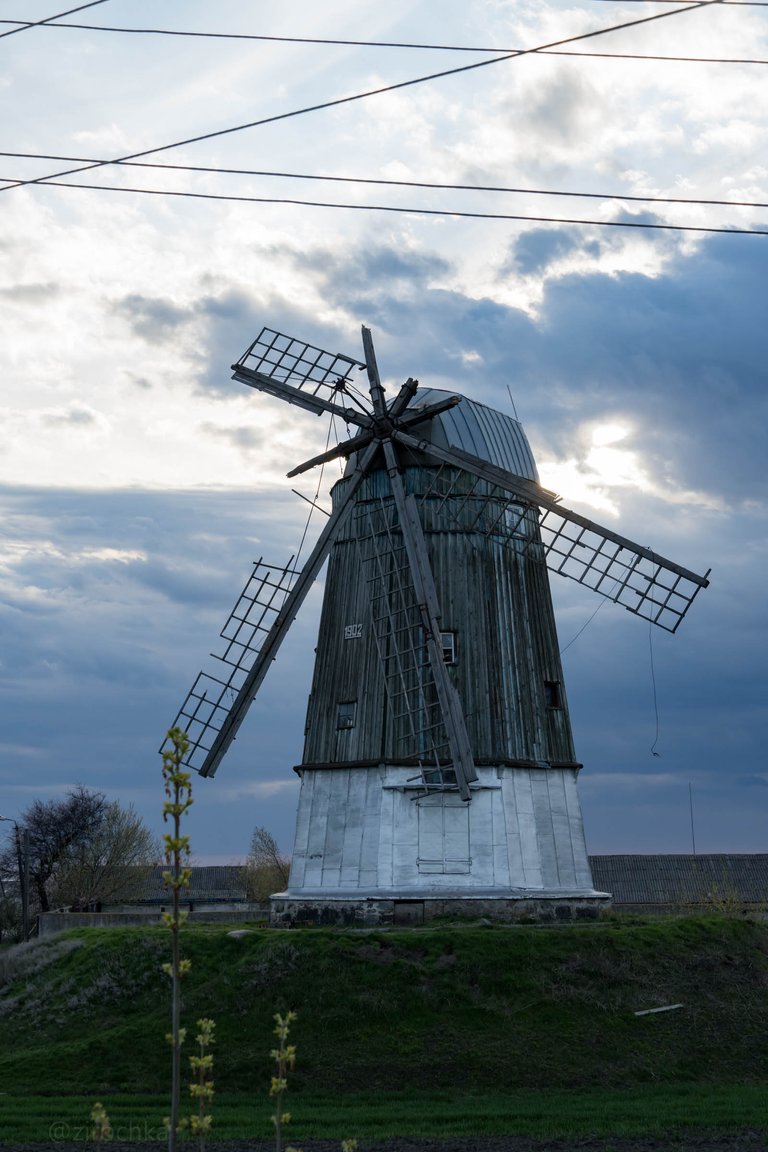
A feature of the windmill is a mechanism that automatically turns the blades of the windmill against the wind, unlike typical windmills that are turned manually.
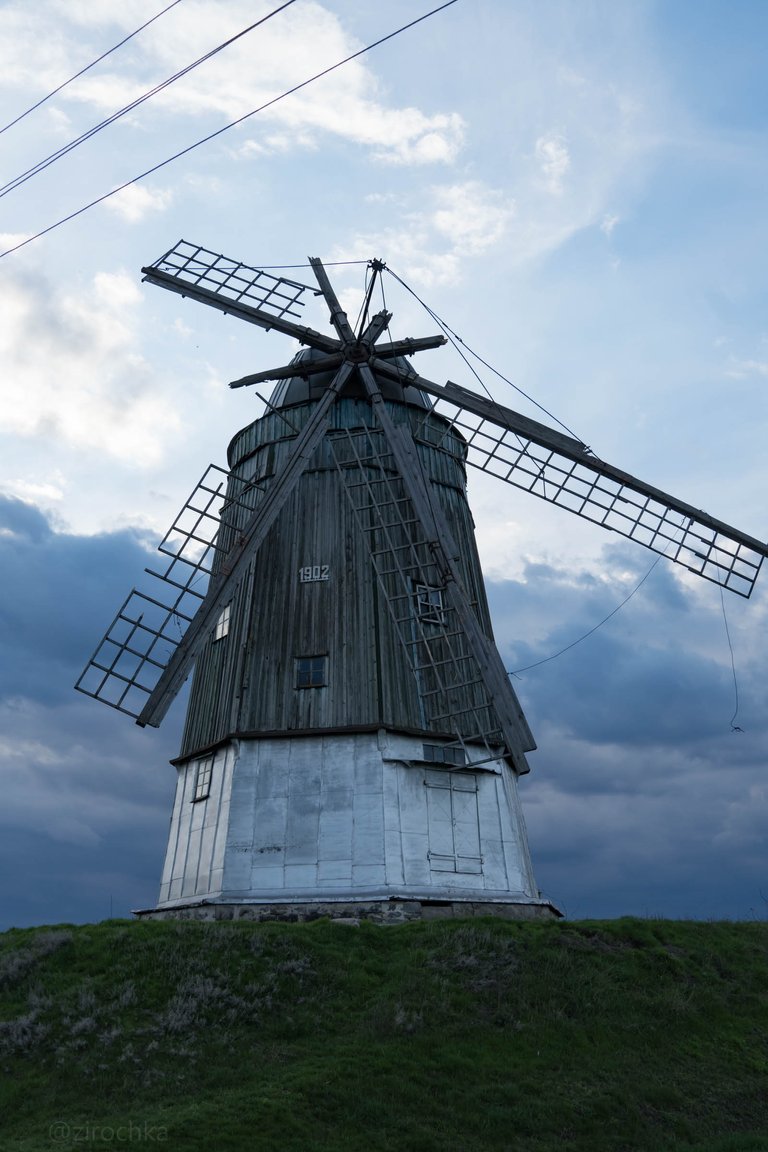
Later, Kuzma and his sons built two more smaller mills and became a well-known entrepreneur who milled flour for all the surrounding villages. They even set up a welcoming courtyard for visiting customers.
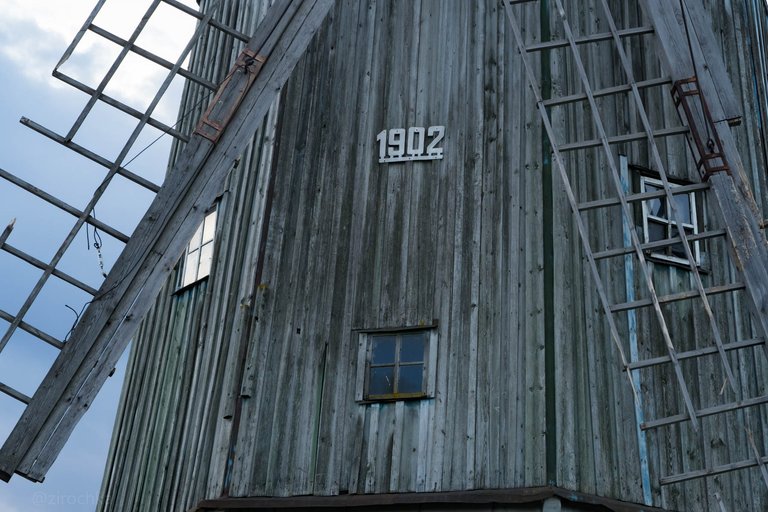

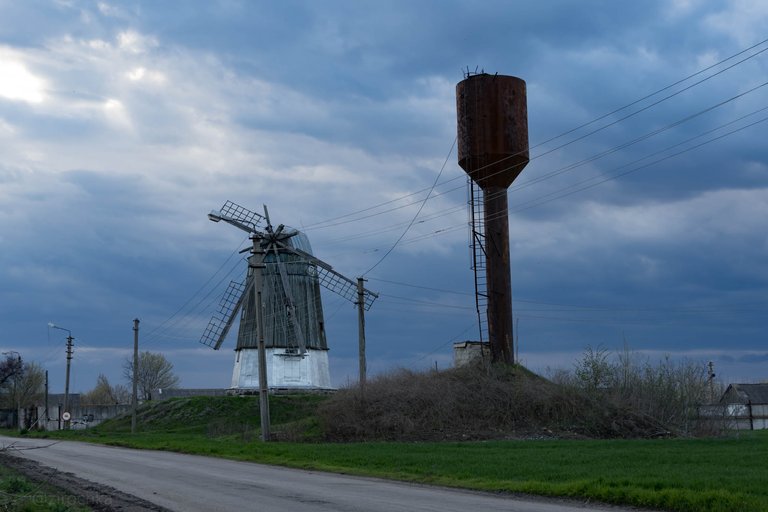
The future fate of the miller's family was not very happy. In 1926, Kuzma Dryga died, and his children and their families were exiled to Siberia. Most of his descendants died abroad, or in the Second World War, or during the Holodomor.
But the Dutch windmill was more fortunate. Smaller mills were destroyed, and the big one miraculously survived, lived through the threat of burning, Bolshevik terror, collectivization, famine and war.
Truth to be said, it looked much better before the full-scaled Russian invasion. It had 8 blades and they were well-preserved. Now only 4 survived and I couldn't find out what exactly happened. Anyway, I am glad I managed to come here. Who knows what is waiting for it in the future?
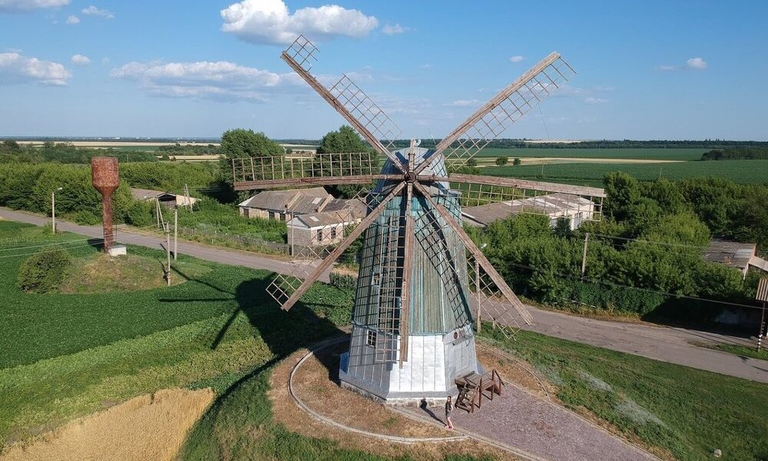
This photo is from the local site, as well as some details of the story.

This is obviously my last post to the amazing Pinmapple community. It was a great project and wonderful team work. KUDOS, dear team!👍💪💖
I'll miss...
And thank you for stopping by!



